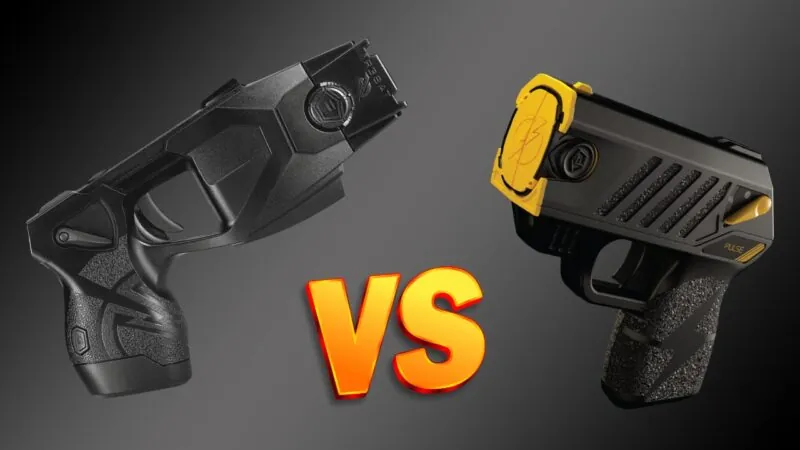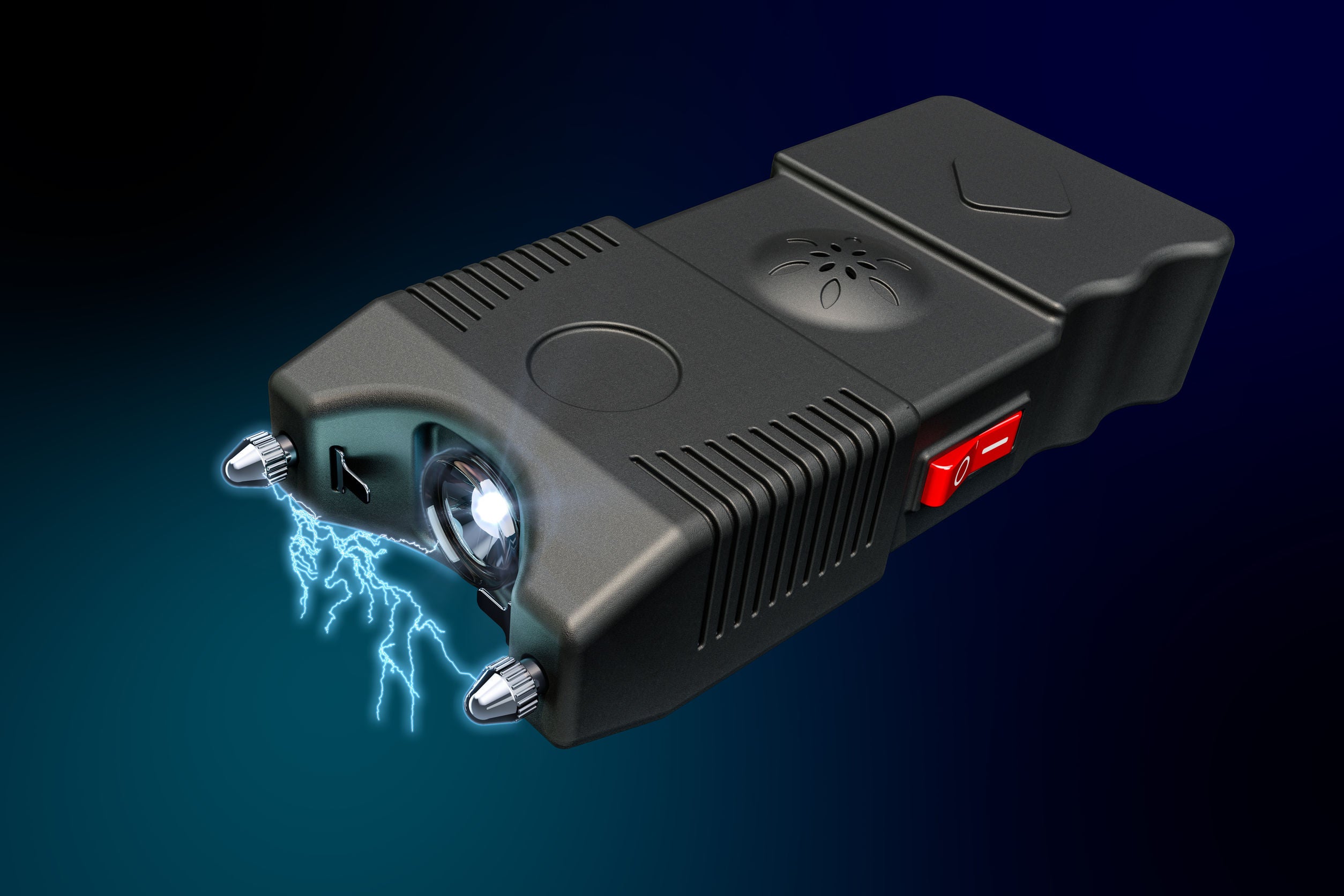In the realm of personal defense and law enforcement, stun guns and Tasers are often mentioned interchangeably, yet the two devices are distinct in their design, function, and application. Misunderstandings about how they work, their safety, and their legality have contributed to a swirl of myths that can confuse consumers and professionals alike. In this article, we delve into the facts about stun guns and Tasers, separating myth from reality to help you better understand their differences, capabilities, and appropriate use. Whether you’re considering one for self-defense or simply want to be informed, a clear-eyed look at the truth behind these devices is essential.
- Understanding the Fundamental Differences Between Stun Guns and Tasers
- Common Misconceptions Surrounding Effectiveness and Safety
- Analyzing Legal Regulations and Usage Guidelines for Both Devices
- Expert Recommendations for Choosing the Right Personal Defense Tool
- Wrapping Up
- Related Products
- Check Our Other Blogs
Understanding the Fundamental Differences Between Stun Guns and Tasers
When it comes to non-lethal self-defense tools, stun guns and Tasers are often mistakenly thought to be interchangeable, but they operate on fundamentally different principles. A stun gun requires direct contact with the attacker to deliver an electrical shock that disrupts muscle functions temporarily. In contrast, a Taser functions as a projectile weapon, firing barbed darts connected to wires that transmit an electric current from a distance. This key difference means that while stun guns demand proximity and physical engagement, Tasers offer the advantage of keeping the user out of immediate harm’s way.
Key distinctions include:
- Range: Stun guns require direct touch, while Tasers can discharge from several feet away.
- Delivery: Stun guns shock the surface muscles using direct contact; Tasers penetrate through darts to affect deeper muscle groups and the nervous system.
- Usage: Tasers are often preferred by law enforcement for controlling suspects safely, whereas stun guns are more common for personal self-defense.
Common Misconceptions Surrounding Effectiveness and Safety
There is a widespread belief that stun guns and Tasers are interchangeable in both function and safety profile, which is far from accurate. Many assume that because both devices are designed for personal defense, their effectiveness operates on the same principle and outcome. Tasers deploy wired probes that deliver a high-voltage, low-current shock to disrupt muscle control, enabling users to incapacitate a threat from a distance. On the other hand, stun guns require direct contact, delivering a painful but localized shock without affecting the nervous system extensively. This critical difference impacts not only how they are used but their success rates in various situations. Often, misconceptions arise from media portrayals that dramatize encounters without clarifying these nuances, leaving users shaken about the reliability of either tool in a real-world scenario.
Safety myths also cloud public understanding. A common misconception is that these devices are inherently dangerous or designed to cause permanent harm. In reality, when employed correctly, stun guns and Tasers are generally non-lethal alternatives intended for temporary incapacitation. However, the effectiveness and safety hinge largely on responsible usage and context – for example, the presence of underlying health conditions in the target or the device’s proximity and duration of use can dramatically influence outcomes. Remember these critical safety truths:
- Neither device guarantees immediate incapacitation in every encounter
- Misuse or prolonged exposure can heighten risks, including cardiac complications
- Proper training and understanding of legal limitations increase both effectiveness and safety
Dispelling these myths not only aids informed decision-making but also encourages safer handling practices essential for responsible self-defense.
Analyzing Legal Regulations and Usage Guidelines for Both Devices
Understanding the legal landscape surrounding stun guns and tasers is crucial, as regulations vary widely across jurisdictions. In many U.S. states, stun guns are treated with less restriction than tasers, primarily due to their differing levels of lethality and range. For instance, some states permit civilian possession of stun guns without a permit, while others impose strict licensing requirements or outright bans. On the other hand, tasers-considered conducted electrical weapons with longer effective ranges-often face tighter controls, including mandatory training, background checks, and restrictions on carry in public spaces. These legal boundaries are designed to balance public safety with individual rights to self-defense, but they can often seem complex and contradictory to the average user.
The proper usage guidelines for both devices emphasize responsible handling and adherence to local laws. Typically, users are advised to:
- Receive formal training to understand device operation and potential risks;
- Avoid use on vulnerable populations such as children, elderly, or individuals with known heart conditions;
- Use only as a last resort in situations of clear self-defense or immediate threat;
- Respect guidelines on storage and transportation to prevent unauthorized access or misuse.
Failure to comply with these regulations can lead not only to legal consequences but also to increased liability in self-defense claims. Ultimately, even in areas where possession is legal, conscientious use is paramount.
Expert Recommendations for Choosing the Right Personal Defense Tool
When selecting a personal defense tool, it’s crucial to evaluate your lifestyle, legal considerations, and comfort with the device. Start by researching local regulations to ensure the tool you choose is legal in your jurisdiction-this is a foundational step often overlooked. Consider your physical strength and ability to deploy the device effectively under stress; a stun gun typically requires direct contact, while a Taser allows for keeping distance but may require more training to use confidently. Additionally, assess the reliability and battery life of the device, as these factors directly impact your safety during critical moments.
Key points to factor into your decision include:
- Portability: How easily can you carry and access the device daily?
- Effectiveness: What range and stopping power does the tool provide?
- User proficiency: Are you comfortable and trained in using the tool under pressure?
- Recharge and Maintenance: How accessible and quick is recharging or replacing batteries?
- Immediate availability: Can you deploy it instantly without fumbling?
Wrapping Up
In the end, understanding the differences between stun guns and tasers is crucial for making informed decisions about personal safety and law enforcement tools. While both devices serve a similar purpose-to incapacitate temporarily-they operate in distinct ways with unique advantages and limitations. By debunking common myths and laying out the facts, we can move beyond misconceptions and foster a more nuanced conversation about their use, effectiveness, and safety. Whether you’re considering a device for self-defense or simply curious about how they work, knowledge is your greatest asset. Stay informed, stay safe.
Related Products
Check Our Other Blogs
- StunGun – Your Trusted Source for Stun Guns, Laws, and Self-Defense Tips
- PepperSprayLaws – Your Trusted Resource for Pepper Spray Information
- StunGunLaws – Your Trusted Guide to Stun Gun Legality and Safety
- Featured.biz – Your Hub for the Latest in Tech & Electronics
- SafetyTips – Your Guide to Smarter, Safer Living























:format(webp))

